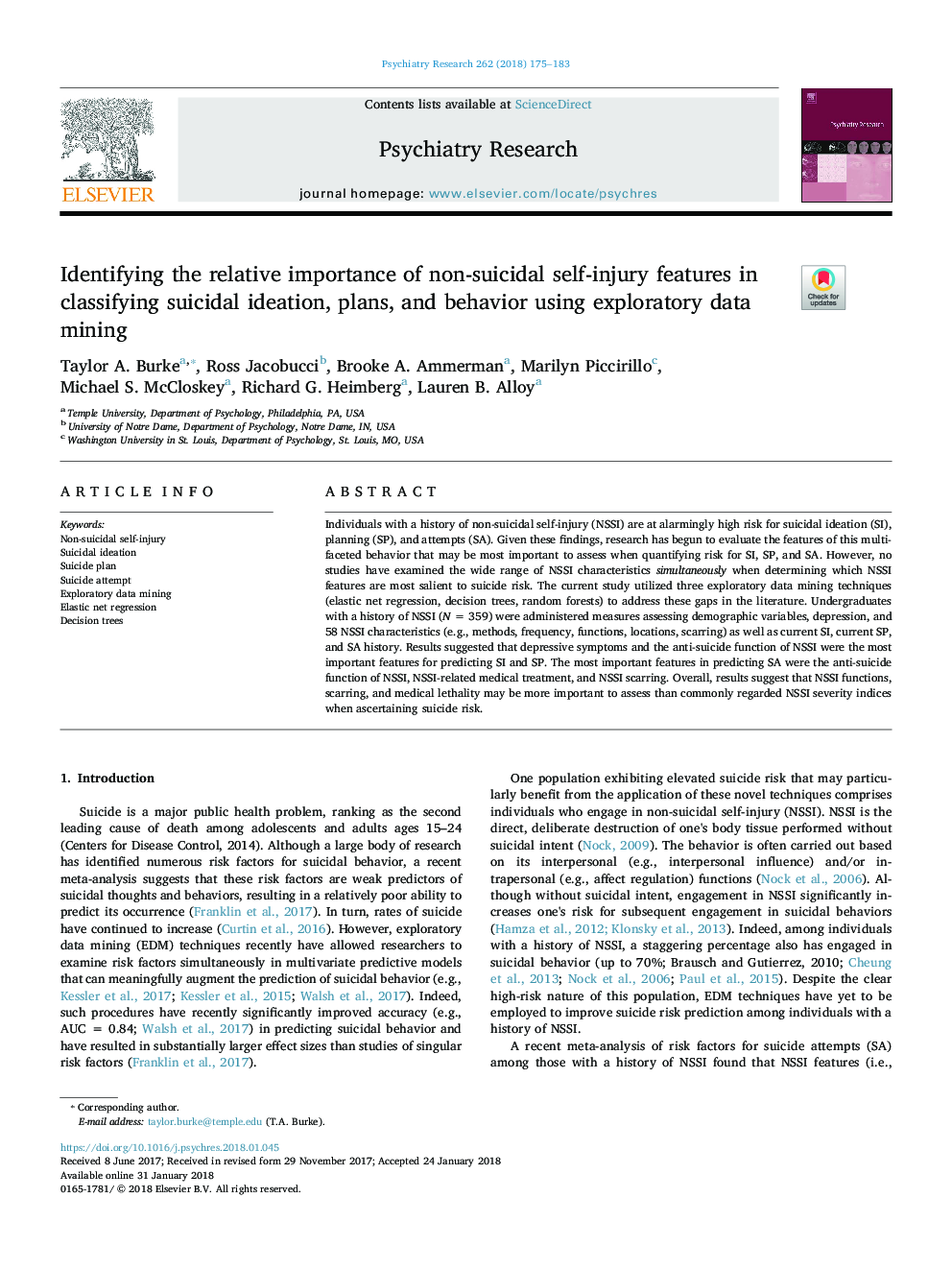| Article ID | Journal | Published Year | Pages | File Type |
|---|---|---|---|---|
| 6811590 | Psychiatry Research | 2018 | 9 Pages |
Abstract
Individuals with a history of non-suicidal self-injury (NSSI) are at alarmingly high risk for suicidal ideation (SI), planning (SP), and attempts (SA). Given these findings, research has begun to evaluate the features of this multi-faceted behavior that may be most important to assess when quantifying risk for SI, SP, and SA. However, no studies have examined the wide range of NSSI characteristics simultaneously when determining which NSSI features are most salient to suicide risk. The current study utilized three exploratory data mining techniques (elastic net regression, decision trees, random forests) to address these gaps in the literature. Undergraduates with a history of NSSI (N = 359) were administered measures assessing demographic variables, depression, and 58 NSSI characteristics (e.g., methods, frequency, functions, locations, scarring) as well as current SI, current SP, and SA history. Results suggested that depressive symptoms and the anti-suicide function of NSSI were the most important features for predicting SI and SP. The most important features in predicting SA were the anti-suicide function of NSSI, NSSI-related medical treatment, and NSSI scarring. Overall, results suggest that NSSI functions, scarring, and medical lethality may be more important to assess than commonly regarded NSSI severity indices when ascertaining suicide risk.
Related Topics
Life Sciences
Neuroscience
Biological Psychiatry
Authors
Taylor A. Burke, Ross Jacobucci, Brooke A. Ammerman, Marilyn Piccirillo, Michael S. McCloskey, Richard G. Heimberg, Lauren B. Alloy,
